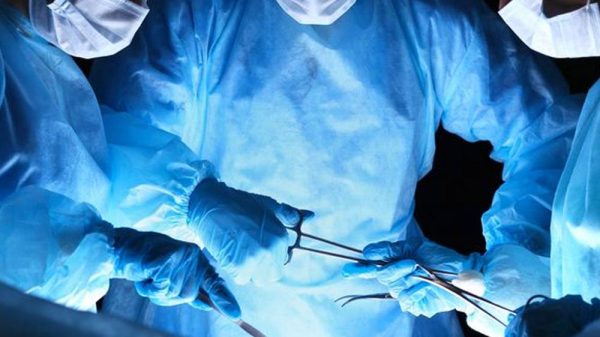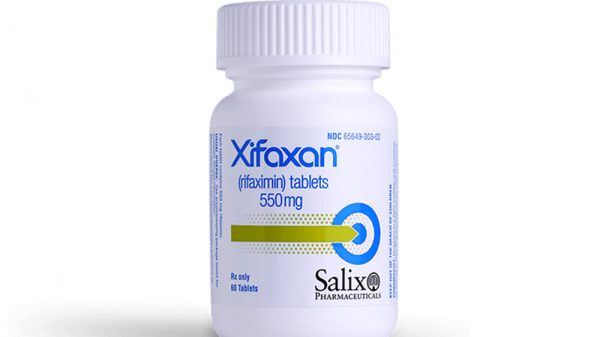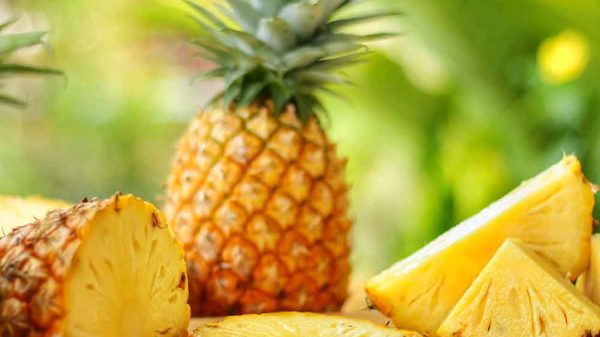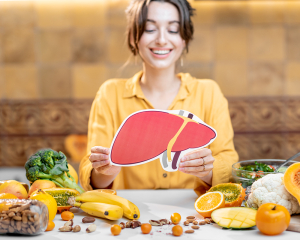Fatty liver disease is the most common liver condition affecting Americans. If you’ve been diagnosed with fatty liver disease, your doctor likely advised you on dietary changes to help reverse the condition. The early stages of fatty liver disease can be reversed by making changes to your diet, such as eating enough protein, avoiding saturated fat and sugar, and getting plenty of micronutrients like vitamins, minerals, and antioxidants. But what should you be eating for fatty liver disease? What should your meals look like? In this article, we give you high protein low fat snacks and meals that are liver-friendly.
The Lowdown on Protein, Fat, and Liver Health
When following the fatty liver disease diet plan, it’s crucial to choose your proteins and fats wisely. Here’s what you need to know about protein and fat on the fatty liver disease diet.
Protein Is Vital for Liver Health
Why is it so important to get enough protein on the fatty liver disease diet plan? Protein affords amino acids, which are considered the building blocks of protein. In general, there are two main types of amino acids that the body uses from food: essential amino acids and nonessential amino acids. Although nonessential amino acids are found in foods, the body can also synthesize them internally. On the other hand, the body is unable to synthesize essential amino acids, making them nutritionally required.
The nine essential amino acids are leucine, isoleucine, valine, threonine, methionine, histidine, lysine, phenylalanine, and tryptophan. Getting optimal ratios of these essential amino acids on a daily basis supports overall health and well-being. The body requires essential amino acids to synthesize muscle tissue, connective tissue, neurotransmitters, and enzymes.
On top of that, essential amino acids are vital for liver health. Getting optimal ratios of essential amino acids supports liver function by playing a role in lowering inflammation, reducing liver fat levels, and protecting liver tissue from hepatocellular carcinoma, or liver cancer.
Finally, eating plenty of protein is key to a healthy metabolism. Protein is digested slowly and prevents blood sugar spikes while also helping you feel full for longer. As a result, a diet rich in protein can help facilitate weight loss.
How can you ensure that you’re getting the essential amino acids that you need? All animal proteins offer optimal ratios of essential amino acids. Excellent sources of animal protein include fish, chicken, beef, cheese, milk, and eggs. Make sure to choose low-fat dairy and lean meat, to reduce your intake of saturated fat.
Unlike animal proteins, no single source of vegetable protein offers optimal ratios of essential amino acids. As a result, it’s important to combine vegetable proteins throughout the day to meet the body’s essential amino acid requirements. Whole grains, nuts, seeds, beans, and soy products are good plant-based protein sources.
The snack and meal ideas we include below make sure to offer lean proteins or a combination of veggie proteins to help meet your essential amino acid needs.
Good Fats vs. Bad Fats
When choosing foods and preparing meals, it’s important to keep in mind that not all fats are bad. Saturated fats and trans fats are both harmful to your health. A high consumption of saturated and trans fats over time can disturb normal metabolic functions and increase the risk of developing type 2 diabetes, insulin resistance, and fatty liver disease.
Saturated fat is an unhealthy fat found in animal products like beef, pork, cheese, cream, butter, and whole milk. In addition to impeding healthy metabolic function, a diet high in saturated fat is linked to high cholesterol and increases the risk of developing heart disease. Trans fats are often found in processed and fried foods like frozen pizza, packaged doughnuts, and French fries. It’s best to avoid processed and fried foods and to consume animal products in moderation. When eating meat and dairy, always choose low-fat and nonfat options.
While saturated fats and trans fats are bad fats, monounsaturated and polyunsaturated fats are rich in anti-inflammatory components that promote liver health. In particular, omega-3 fatty acids are polyunsaturated fats that have a particularly powerful anti-inflammatory impact on the body. You can get omega-3 fatty acids from foods like salmon, mackerel, chia seeds, flaxseeds,
When we go through low fat snack and meal ideas below, keep in mind that the recipes are low in bad fats, while offering a healthy amount of good fats.
Other Tips for Following the Fatty Liver Disease Diet Plan
Before we dive into high protein low fat snack and meal ideas that are good for liver health, here are a few more tips for what to eat and what to avoid on the fatty liver disease diet.
Foods to Eat
In addition to healthy proteins and fats, there are more healthy foods to add to your diet.
Fruits and Vegetables
Eating more fruits and vegetables plays a crucial role in supporting the liver and recovering from fatty liver disease. Fruits and veggies are packed with micronutrients like vitamins and antioxidants. Getting plenty of fruits and vegetables on a daily basis helps facilitate all cellular functions, keeping the body running smoothly, including the liver.
Moreover, the antioxidants present in fruits and vegetables help promote healing from fatty liver disease. Antioxidants work by scavenging free radicals and reducing waste buildup within cells. Getting plenty of antioxidants on a daily basis can help reduce inflammation and oxidative stress in liver tissue
Lots of Fiber
Fiber plays an important role in supporting gut health, by encouraging the growth of healthy bacteria. When the gut is populated by good bacteria, these healthy microorganisms produce anti-inflammatory compounds that travel throughout the body and lower inflammation. Try increasing your fiber intake by eating plenty of fruits, vegetables, whole grains, and beans.
Foods to Avoid
In addition to avoiding saturated fat and trans fat, it’s also a good idea to limit your intake of added sugars, refined carbohydrates, and processed foods.
Added sugars have been isolated from their original source and artificially added to other processed foods. Consuming too much added sugar over time increases the risk of developing conditions like fatty liver disease, insulin resistance, and type 2 diabetes. For optimal health and to reduce the risk of metabolic conditions, steer clear of added sugars.
The body processes refined grains in a similar manner to added sugars. Refined grains have undergone processing to remove nutrients like protein, fiber, vitamins, and minerals. Steer clear of products like white rice, white pasta, white bread, and any products made with white flour, like pastries.
It’s also a good idea to stay away from processed foods, which encompass any foods that have undergone processing and are available in packaging. Processed foods include products like cookies, crackers, chips, and prepared and frozen meals. These foods are usually high in sodium, sugar, saturated fat, and preservatives that increase inflammation in the body.
High Protein Low Fat Snacks
Snacks can sometimes be the most difficult food to plan. It’s tempting to grab a bag of chips from the vending machine or a candy bar at the gas station. Here are high protein snacks that support liver health.
Protein Shakes
Protein shakes are a quick and delicious way to get plenty of protein without unhealthy fats. To make a perfect protein shake for snack, combine frozen bananas with frozen blueberries and frozen mango. Add an essential amino acid supplement and your favorite plant-based milk, such as soymilk or almond milk. Blend the shake until smooth and enjoy!
Homemade Protein Bars
Store-bought protein bars can work as a nutritious snack, as long as they’re low in sugar and saturated fat. However, making your own protein bars is the best way to ensure that you’re getting liver-friendly nutrients without unhealthy additives. Try making your own no-bake protein bars by mixing together nut butter, your favorite protein powder, oats, dried cranberries, low-sugar granola, and ground flaxseeds, and dark chocolate chips. Spread out the mixture on a parchment-lined baking sheet, cool in the refrigerator, and slice into bars. Try using peanut butter or almond butter for different flavors of protein bars.
Rice Cakes and Peanut Butter
Rice cakes and peanut butter make a delicious pairing that’s packed with protein. Choose rice cakes made with brown rice for more fiber and protein. Cover rice cakes with a thin layer of peanut butter and enjoy. Alternatively, swap out the rice cakes for apple slices for a delicious sweet and savory combo.
Greek Yogurt and Berries
Looking for low carb snacks to add to your routine? Greek yogurt and berries make a perfect low-carb pairing that offers high-quality protein and micronutrients. Plus, Greek yogurt is a great source of calcium! To prepare this snack, add a serving of nonfat, plain Greek yogurt to a bowl. Top with your favorite berries like blueberries, raspberries, and strawberries. You can also swap out Greek yogurt for cottage cheese.
Hummus and Veggies
Hummus and veggies offer tons of protein as well as fiber and antioxidants. Healthy hummus options are available at the grocery store, but you can also prepare your own by blending together chickpeas, tahini, olive oil, garlic, salt, and pepper. Pair hummus with crunchy veggies like carrots, celery, broccoli, cauliflower, and tomatoes.
Edamame
Edamame, also known as green soybeans, is a legume that is rich in protein and fiber. Nosh on a handful of edamame for low-carb snack that offers plenty of protein and fiber.
Hard-Boiled Eggs
Hard-boiled eggs make a perfect keto snack. Boil eggs and keep them in the fridge for up to a week for an easy, healthy snack. Enjoy hard-boiled eggs on whole-grain toast, or plain with a little bit of salt and pepper.
Popcorn
If you love snacking on crunchy foods, popcorn is a satisfying option. Air-popped popcorn or stovetop popcorn made with a little olive oil or avocado oil are great ways to prepare this snack. Popcorn is a good source of fiber and is a better source of protein than you might think. Just one cup of plain popcorn provides about 3 grams of protein, nearly 4 grams of fiber, and only about 100 calories.
Chia Seed Pudding
Chia seeds are rich in alpha-linolenic acid (the plant form of omega-3 fatty acids) as well as fiber and magnesium. Chia seed pudding can be prepared by soaking whole chia seeds in plant-based milk, like light coconut milk or almond milk. Soak the mixture for a few hours or overnight. In the morning, top the chia seed pudding with sliced bananas for extra potassium as well as
Trail Mix
Are you looking for high calorie snacks that offer plenty of energy, protein, and healthy fat to keep you tied over until the next meal? Trail mix is a tasty, high protein snack option that can be enjoyed on the go and offers plenty of energy. Try preparing your own trail mix by combining cashews, walnuts, pumpkin seeds, dried fruit, roasted chickpeas, and dark chocolate. Cashews, walnuts, and pumpkin seeds offer lots of healthy fats and protein, while goji berries offer loads of antioxidants.
High Protein Low Fat Meals
Here are a few tasty meal ideas that are high in protein and low in unhealthy fat.
Tofu and Veggie Stir-Fry
A tofu and vegetable stir-fry is the perfect way to pack tons of protein and lots of longevity-promoting ingredients into one meal. Saute vegetables of your choice, such as onions, green beans, carrots, broccoli, and cauliflower. Add tofu and season the mixture with coconut milk, curry, cumin, ginger, lemon, salt, and pepper. To round out the protein content of the meal, enjoy the curry stir-fry with brown rice or quinoa.
Tacos with Ground Turkey, Beans, and Vegetables
Tacos are a delicious and versatile way to get plenty of protein and nutrients into your meal. To prepare the taco filling, first cook lean turkey breast in a pan and season it with chili powder, garlic powder, paprika, cumin, salt, and pepper. Add black beans and cooked lentils to the mixture. In another pan, use a little bit of water to saute onions, peppers, zucchini, mushrooms, and eggplant. Season with garlic powder, paprika, chili powder, salt, pepper, and a squeeze of lime.
Assemble your tacos using whole-grain tortillas. Layer the turkey and bean mixture with the vegetables. Top with fresh avocado slices, salsa, and cilantro.
Stuffed Peppers
Stuffed peppers create a nutritious, protein-packed lunch or dinner option. Try preparing a vegetarian filling using crumbled tofu, chopped walnuts, and cooked lentils. Saute the mixture in olive oil and season with salt, pepper, red pepper flakes, chipotle chili powder, and cumin. Stuff the bell peppers with the mixture as well as cooked bulgur, onions, spinach, carrots, and celery. Top the filled peppers with a sprinkle of low-fat mozzarella cheese and bake until the peppers are tender and the cheese is melted.
Chicken and Pasta Salad
This light, plant-based dish is perfect for the summer season and can be prepared with any seasonal vegetables. First, prepare a whole-grain pasta of your choice, such as fusilli, cavatappi, or penne pasta. If you want to increase the protein content of the pasta, choose a pasta prepared with chickpeas or lentils.
Next, add a variety of vegetables and legumes, such as onions, roasted red peppers, bell peppers, wilted spinach, white beans, and sunflower seeds. For extra protein, add shredded chicken breast. Toss the fresh pasta, vegetables, and shredded chicken breast with a dressing made with olive oil, champagne vinegar, oregano, basil, red pepper flakes, salt, and pepper.
Vegetable Pita Pocket
A pita pocket is an easy way to get plenty of protein and vegetables at lunchtime. First, line a whole-grain pita wrap with lettuce leaves, to prevent the bread from getting soggy. Next, prepare homemade hummus by combining chickpeas, garlic cloves, olive oil, tahini, salt, pepper, and paprika in a blender or food processor. Spread the homemade hummus on the lettuce leaves. Pack the pita pocket with a variety of vegetables of your choice, like tomatoes, cucumber, spinach, red onions, and bell peppers. To increase the protein content of the pita pocket, add vegan falafel or seasoned tofu and a scoop of brown rice. Increase the healthy fat content of your pita pocket by adding a few slices of ripe avocado.
Shrimp and Veggie Stir-Fry
When preparing a stir-fry, you can reduce your intake of fat by using a little bit of water to cook veggies and protein and adding just a small drizzle of olive oil or avocado oil later in the cooking process. Shrimp is a great protein option because it provides optimal ratios of essential amino acids, is low in calories, and is virtually fat-free. First, saute your shrimp and season them with Old Bay seasoning and garlic powder. Add a vegetable medley of your choice, like sliced carrots, cabbage, spinach, and bell peppers. Serve your shrimp stir-fry over a bed of brown rice.
Baked Salmon with Roasted Sweet Potatoes and Brussels Sprouts
Salmon is high in protein and rich in omega-3 fatty acids that help reduce inflammation in liver tissue. Add lemon slices, thyme, garlic powder, salt, and pepper to salmon to season it. Next, chop sweet potatoes into cubes and slice Brussels sprouts in half. Toss the sweet potatoes and Brussels sprouts in a drizzle of avocado oil, and season with garlic powder, chipotle chili powder, salt, and pepper. Bake the salmon, sweet potatoes, and Brussels sprouts on a baking sheet. Serve with a side of quinoa or couscous.
Burrito Bowl
A burrito bowl is easy to meal prep and makes a delicious, nutrient-packed lunch. First, prepare a vegetable and tofu mixture by sauteing onions, bell peppers, zucchini, mushrooms, spinach, and tofu in a pan. Season the mixture with garlic powder, chipotle chili powder, cumin, salt, and pepper. To assemble your burrito bowl, add brown rice, the veggie and tofu mixture, avocado, chopped lettuce, chopped tomatoes, and black beans to a container. Top with cilantro and a squeeze of lime to prevent oxidation and subsequent browning of the avocado.
Scrambled Egg Whites on Toast
This is an easy meal idea that you can enjoy for breakfast, lunch, or dinner. First, prepare a scramble by using only the whites of the eggs, which contain the most protein and almost no fat. Add vegetables like chopped spinach, onions, bell peppers, and mushrooms. Scramble the mixture and season with salt, pepper, basil, and red pepper flakes. Enjoy the egg white scramble on a slice of whole-grain toast.
Overnight Oats
Overnight oats make a fiber-filled, protein-packed, low-fat breakfast option that can easily be prepared in advance. Prepare overnight oats by soaking whole oats in a jar with ground flaxseeds, crushed walnuts, blueberries, and plant-based milk. Enjoy in the morning with a drizzle of honey for extra sweetness.
Conclusion: High Protein Low Fat Snacks and Meals for Fatty Liver Disease
If you have fatty liver disease, getting plenty of high-quality protein while reducing your intake of added sugar and saturated fat is key for reversing the condition. The best snacks and meals for fatty liver disease offer optimal ratios of essential amino acids and plenty of micronutrients. Having high protein low fat snacks and meals on hand helps you stay consistent with the fatty liver disease diet plan. Plus, these healthy snack and meal options support overall health and wellness.
























